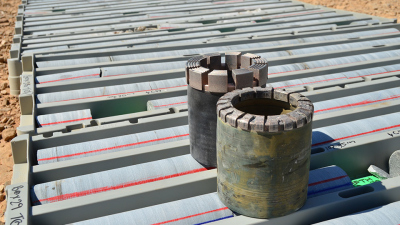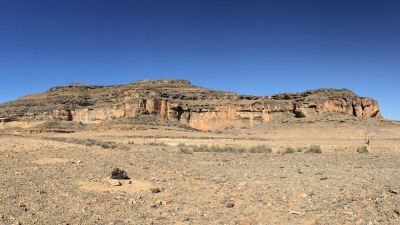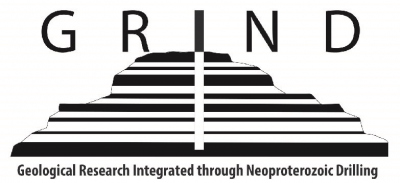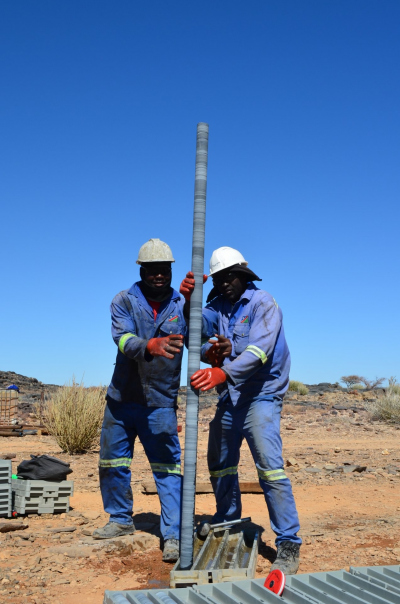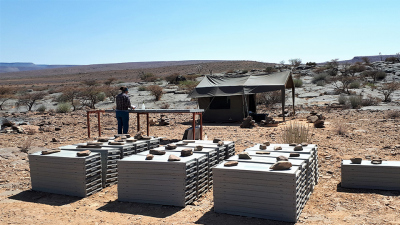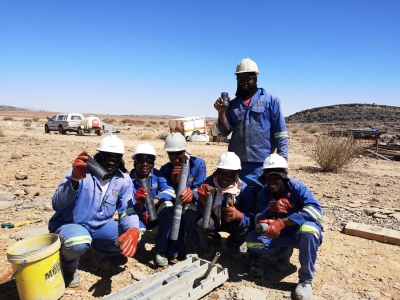- Home
- Discover
- Archive News
- News 2019
- GRIND ICDP
International drilling project started in Namibia
The Neoproterozoic Era 1,000 to 541 million years ago is one of the most drastic in Earth history: multicellular organisms evolved, the supercontinent Rodinia formed and broke apart, the global carbon cycle was subject to strong fluctuations, oxygen concentrations rose, and the climate experienced at least two episodes of worldwide glaciation. Rock outcrops from the Neoproterozoic, which scientists can use to study the era, are mostly difficult to access and not continuous. This makes it difficult to develop quantitative models of Earth system functioning during this Era. The outcrops are old seabeds that are particularly well preserved in the three regions. The ancient marine rocks thus form a continuous archive of the ecological and biogeochemical conditions in which animals evolved at the time.
The aim of the GRIND project is to provide a temporally high-resolution geobiological, stratigraphic and geochemical database, as well as a long-term archive for future research by means of a network of contiguous layers showing the transition from the Ediacaran to the Cambrian about 560 to 530 million years ago. To achieve this goal and understand the driving mechanisms of the Neoproterozoic revolution of the Earth system, the project will bring together data from the three distant regions.
Scientists from over 14 nations are involved in GRIND-ECT. The project is steered by a Central Science Team: Tony Prave (University of St Andrews, UK), Simone Kasemann (University of Bremen), Francis Macdonald (University of California Santa Barbara, USA), Catherine Rose (University of St Andrews, UK), Kristin Bergmann (Massachusetts Institute of Technology, USA), Abner Nghoongoloka (Geological Survey Of Namibia, Namibia), Ricardo Trindade (University of Sao Paolo, Brazil), Moayan Zhu (Nanjing Institute of Geology, Palaeontology and Stratigraphy, China). Scientific advisors are Aivo Lepland (Geological Survey of Norway, Norway) and Bruce Levell (Oxford University, Great Britain).
On 24 September 2019, the drilling began at Tierkloof in the southern Namibian desert by Günzel Drilling Company. Until end of November 2019, GRIND-ECT will continue drilling four additional holes in southern Namibia around the Swartpunt and Orange River areas. The cores will be shipped to the Federal Institute for Geosciences and Resources (BGR) core repository in Berlin, Germany, for detailed core characterization.
Contact:
Prof. Dr. Simone Kasemann
Isotope Geochemistry
Phone: 0421 218 65930
Email: [Bitte aktivieren Sie Javascript]
